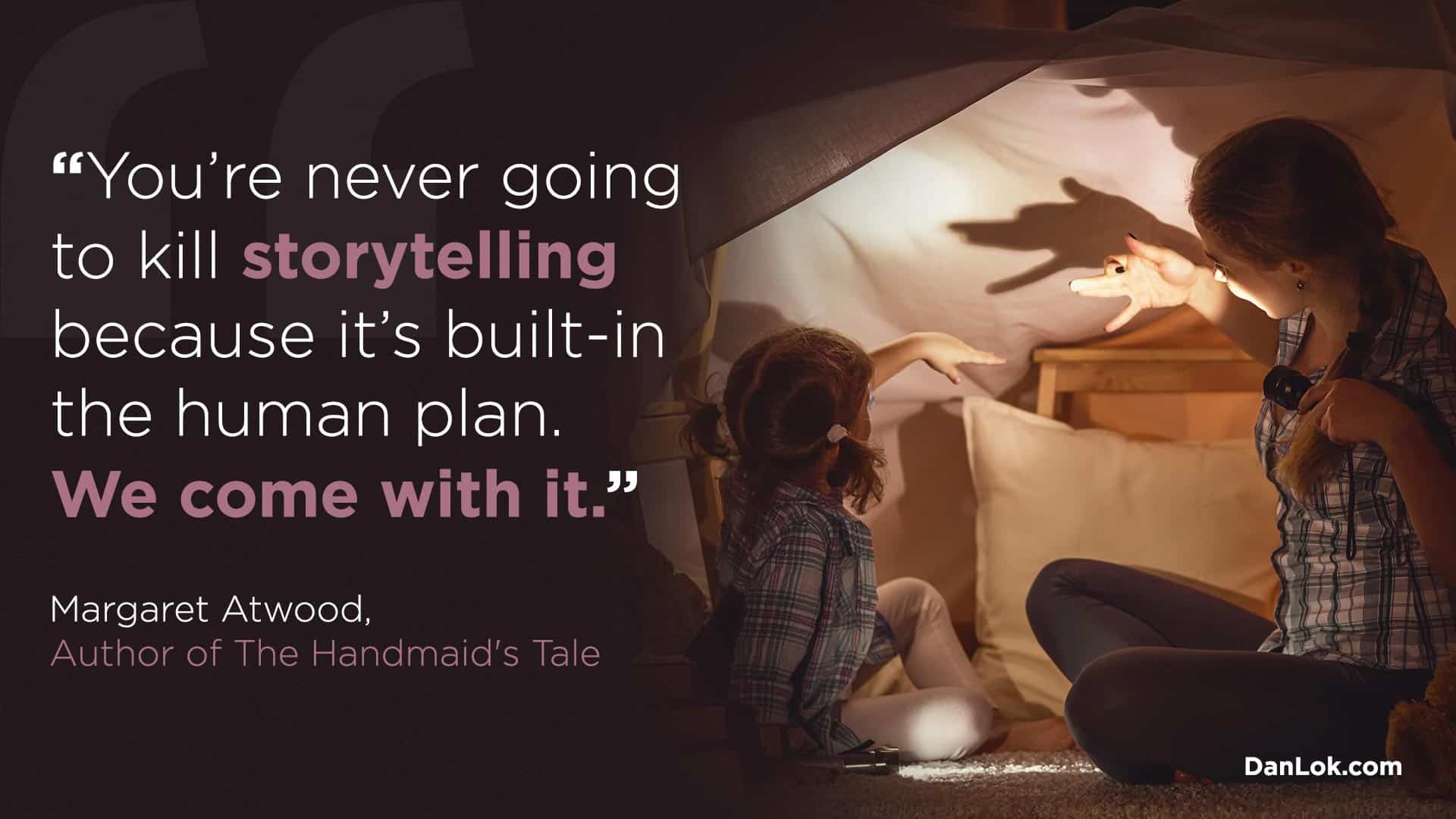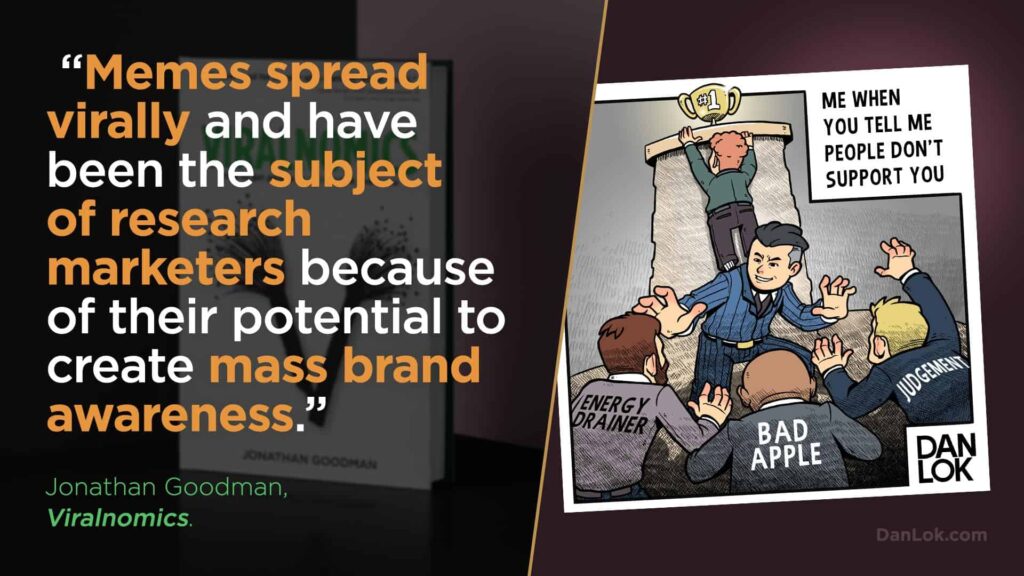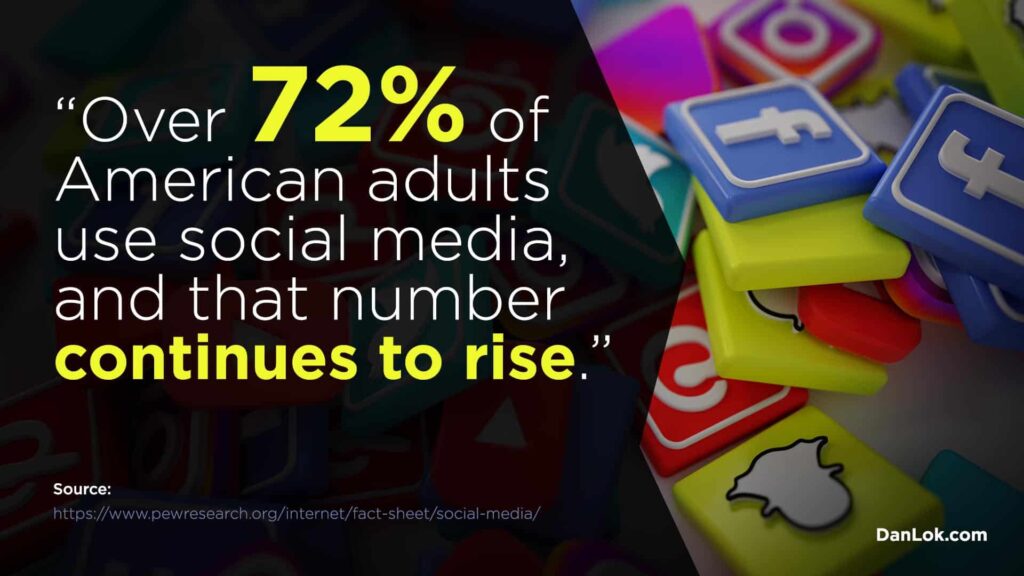Social media is an excellent tool to attract clients if used correctly. Read on to learn how to use social media to get more clients.
Is it possible to use social media to get more clients?
For entrepreneurs, it is a powerful opportunity to get the most attention in a short period of time. Clients are essential to your business because, without them, you can’t generate revenue and your business will cease to exist.
In order to make this work, not only must you know how to use social media to get more clients, you need to leverage it as a way to attract your ideal potential clients.
You want to magnetize your active and loyal followers of ready-to-buy-fans and turn them into your ideal clients. Share on XLooking at social media as a tool is a very limited way of looking at it. I simply look at it as a place where “attention” goes. You see, that is where people spend their majority of their time. Therefore, having a clear idea of why you’re using social media is an important start to your marketing strategy.

Define Your Social Media Platform
When you think of social media, you have different platforms, such as YouTube, Facebook, Instagram, Snapchat, Twitter and more. On top of that, there are new platforms being developed and launched every single month or day.
While most business owners haven’t clearly defined why and which social media platform to use, how will you accomplish your goal?
In the past, advertising via the radio, television, newspapers or the magazine were used to attract clients.
Social media is where people spent the majority of their time Share on XBesides knowing how to use social media to get more clients, how do you convert the attention gained from social media into sales?
Let’s say you have your own products and services; you can use social media to get all the views and convert that attention into leads. And once you get those leads, you can follow up with them – drive them to your website, webinar or get them on the phone and actually sell them your product or service.
Another way to do it is if you don’t have a product or service but you have a lot of followers – you have “fame” which can be leveraged to get brand deals, endorsements or sponsorships. In this case, brands and companies will pay to get access to that attention.
Instead of being an entrepreneur with products and services, you’re leveraging their brands and companies to make money from social media. That’s if you have an incredibly huge number of followers.
Let me share with you the first rule of marketing online
Getting The Right Audience
As mentioned in the video, if it’s the right audience, companies are willing to pay you a large sum of money to collaborate with them and provide access to your pool of followers. They’ll collaborate by publishing a video with you, a single post or an endorsement video.
What they are actually paying for is the shortcut to getting the attention and views from your followers. And if you have one million followers, you can do that.
Social media is not only for companies that are looking to sell their products and services.
You can also do some kind of collaboration, where you’re promoting a particular brand or other company’s products and services, such as affiliate marketing deals.
When it comes to social media, there are many ways to make money Share on XIf your question is “how to use social media to get more clients” – that’s how you can make money online – with or without a product.
The thing is, when it comes to social media, there are many ways to make money. What I mean is, the line between social media and marketing is blurry. For example, “offline marketing” or “direct mail” or “TV marketing” or even “Facebook marketing”.
Social media itself is marketing.
Imagine how much attention and time span these people are giving. The number of hours they spend on reading newspapers and watching television compared to people who spend their time on social media.

You Can’t Sell If You Don’t Get Their Attention
People are spending more time on YouTube watching videos and reading Facebook posts every day versus reading a newspaper. And you can’t sell to them if they’re not paying attention to you.
It’s more difficult to sell to people who don’t pay attention to you because they don’t know who you are – simple!
The thing is, people think social media is something like, “As long as I get attention – I’ll make money” or “If I build a number of followers, I’ll make money”. You’re wrong!
Let’s say you’re building a group of followers on your Instagram channel, this is what I always ask people, “If you’re not making money with 20,000 followers, what makes you think you can make money with 40,000 or 60,000 followers?
Watch this video on how to make money on Instagram
It doesn’t make sense if you suddenly say you can make money when you reach 100,000 followers. You don’t suddenly make money when you haven’t been making money throughout the whole journey.
One method on how to use social media to get more clients is to have a solid business model – an offer that converts. This is a product and service that people actually want to spend their money on before you drive attention.
If you produce and launch a bad product, oftentimes people remember the bad more than the good. And even though you have all the attention – it’s not going to make you money.
Assuming you have a good product, not only will you get the attention to grow, but you also get to scale your business fast.
Social media is an excellent tool to generate clients if used correctly. It can help you reach billions of people around the world. Look at the number of people on Facebook daily, it has over 1.66 billion users.

Create A Product That Converts Attention To Clients
To get the attention of your followers through social media, the first thing is to make sure you’re using the right social media platform. What is your goal? What would you like to achieve on a particular social media platform?
Over 97% of marketers are using social media to get attention from their clients. That’s why it’s important to have a solid business model to convert this attention to your clients.
It can be hard to pick with a social channel to use but these guidelines will be able to provide a certain clarity.
97% of marketers are using social media to get attention from their clients Share on XWith a greater need for social media and the overwhelming amount of platform choices – you don’t want to spread yourself thin by managing each and every imaginable platform. However, you also don’t want to miss great brand-awareness opportunities.
With that said, I’m going to share with you the strength of some major platforms available.

Social Networking
- Facebook: 2.50 billion monthly active users
- Twitter: 126 million daily active users
- LinkedIn: Over 600 million users
These platforms are used for “networking” because they allow some form of interaction between people in different ways. With these platforms, you can build a business profile and include links to your website/s especially Facebook.
Let’s say you have a product or service to introduce to the world – you create an ad or post to get your client’s attention. And if your product is compelling and irresistible, you’ll be able to convert that attention to your client.
Whereas, if you’re looking to offer a professional service – B2B for example, LinkedIn would be a great platform to grow your business. When creating a business profile, you can categorize them according to your industry.
But if you prefer a wider spectrum of industries, having a Twitter account will be helpful – from entertainment to e-commerce. You can use twitter to post about company updates and retweet positive customer’s feedback.
Messaging and comment features for both LinkedIn and Twitter will help increase engagement with your customers.

Sharing Photos and Videos
YouTube: Over 1.9 billion active users
Instagram: Over 500 million daily active users
Pinterest: 235 million monthly active users
Instagram and Pinterest are the two biggest platforms when it comes to photo sharing. This could be helpful for restaurant owners or an online store. You can take photographs and display them to provide updates for your clients.
People like to be updated and if your product catches their attention, they will share among their friends and followers. As a result, you’ll get more clients and drive more traffic to your website.
I spoke about brand deals, endorsements and sponsorships earlier. Instagram is the home to influencer marketing.
Almost 100% of influencer campaigns took place on Instagram Share on XAlmost 100% of influencer campaigns took place on Instagram in 2018.
This is excellent if you don’t have a product or service. You can leverage the influencers with a large fan base on this platform. And that’s how to use social media to get more clients.
It can be just one brand or two – depending on your closing power and ability to attract them.
The difference with Instagram is, it doesn’t allow you to share links directly – Instagram emphasizes visuals. However, for basic users, you can only share links in your bio but if you’re a verified user or you have over 10,000 followers, you can post links in your stories.
Lastly, Pinterest is best categorized for e-commerce activities. For example, those who sell handicraft and home goods. Small business owners can share standalone product images that link to their website or a sale page.
Here’s a video about how to start an E-commerce business
If you’re new at this and still wondering how to use social media to get more clients – there’s so much I can share. I can go on and on and on about social media.
Anyway, for Pinterest, it’s interesting that you’ll be assigned a theme “board” and with that – your clients can engage with you by simply giving you a “heart”.
That means, they like your product and usually, they’ll continue to browse to see what’s more in store. This could be great for lead generation.

Video-Sharing Helps Pin Down Strategy
As I shared, the number of monthly active users on YouTube is over 1.9 billion. Here’s another great video platform – Vimeo has a total of 1.2 million subscribers.
With the rise of people watching videos online – 83% of marketers say video gives a strong return on investment. And, YouTube appeal to be the best video platform choice among online users. Adding a video platform can help pin down your strategy.
Watch this video on The #1 most important secret to grow your YouTube channel
https://youtu.be/qHB7M9KWET4
If you have an incredible business model, a video could make your brand look relevant and keep you up to speed with your competitors.
While a technology company focuses its video strategy around product demos – a restaurant could have a video log with cooking tips.
YouTube and Vimeo are leading platforms for long-form video. Since YouTube appeals to be the best video platform, they have a bigger audience base and better SEO capabilities. On top of that, Google has acquired YouTube and it’s the second-largest search engine next to Google.
A study done by Cisco in 2017, video represents 80% of all internet traffic by 2021.
Videos represent 80% of all internet traffic by 2021 Share on XAs a matter of fact, along with YouTube and Vimeo, more and more traditional social networking platforms have also begun embracing video marketing. Have you notice, in the last few years, Facebook launched “Facebook Stories” and “Facebook Live” – which is added to a tab on your mobile that’s dedicated to video.
Now let’s get into how to use social media to get more clients with interactive media

Younger Generation Yields Interaction
Snap Chat and TikTok’s social media trend lean towards Gen Z and Millennials. The dynamic nature of social media makes it challenging to keep up with the latest trends. With more and more new platforms that have been created, Snapchat and TikTok are taking over the social lives of the youth.
The younger generation influences business opportunity and you can’t afford to miss that. Here’s why; Gen Z holds $44 Billion of buying power. While many brands considered Gen Z as little more than kids who are addicted to their smartphones – 98% percent of Gen Z still shop in-store – according to the National Retail Federation.
That being said, Gen Z population is set to reach 2.6 billion by 2020 and retailers need to create more interactive engagement around their brands to reach new clients. So, with this, exactly how to use social media to get more clients?
Gen Z population is set to reach 2.6 billion by 2020 and retailers need to create more interactive engagement around their brands to reach new clients Share on XLike any other target market, tailor your content for mobile and desktop, that’s why I said in the beginning, choosing the right platform according to your brand and product is essential. In that way, you’ll get all the eyeballs of the right audience.
But why do you need to produce content for both mobile and desktop? According to IBM, 66% of Gen Z frequently use more than one device at the same time.
And because of this, for them to get the best customer experience across all devices – have your branded content put out in the world with the highest optimization – from the layout of a website to blog post to any of these social media platforms.

More Attention Towards Bad Product
Before thinking about scaling your business or promoting your brand. You need to have a solid product or offer that convert your clients into a potential customer. Get their attention by introducing a great product offer.
Because, if you create a bad product, you will get a different kind of attention. Instead of winning and growing your audience as potential buyers, you’ll lose trust from billions of people. And that’s not going to make you rich, you won’t generate any money from bad attention span.
So, assuming you have a really good product, now you’ll get attention from there – you can scale your business fast. Because, with the right social media channel, you can scale by leveraging the huge number of traffic.
My point is, end of the day, you need a product or service that people are willing to spend their money on before you get any attention. Here are some mistakes I see people are making – especially the younger generation.
Don’t fix the marketing first, fix your product. Once you’ve got a good product to talk about, the marketing’s going to flow from that – Scoot Monty, Ford Social-media chief Share on XThey ask me how to use social media to get more clients, just because they want to be famous on social media – they say, “Dan, how can I build a social media followers like you?” But the real question is WHAT FOR? When you’re only 19 years old.
Do you have a product or service to offer to the marketplace?
Here’s another video on “How To Grow Your Social Media”
The thing is if there’s no substance – building that to get more attention doesn’t do any good. As I said, unless you’re in the entertainment industry, that’s a different story.
Even if you managed to grow a large number of followers and making a small income out from it – that might work for the short term. But it won’t be long term progress. So, build that substance and value that shows the marketplace you’re there for reason.
Final Thoughts On How To Use Social Media To Get More Clients
If you’re an entrepreneur, using social media is one easy way to increase your clients. If you have a valuable product or service – you can catch millions of attention throughout your social media platform.
I know it’s not easy and it won’t be an overnight success. With guidance, I’m sure you get more clients on your social media account.
I have over 100 videos on my YouTube channel and I’ve shared some here to get you started on how to use social media to get more clients. My team and I produce videos every single day.
On another note, if you’re already producing content and videos – don’t stop doing it! Post every day so you get the attention on a daily basis.






































